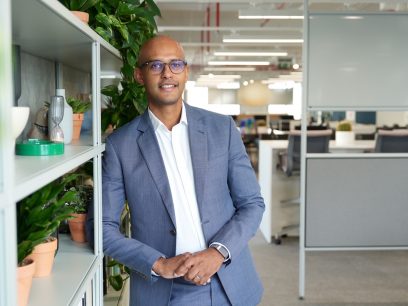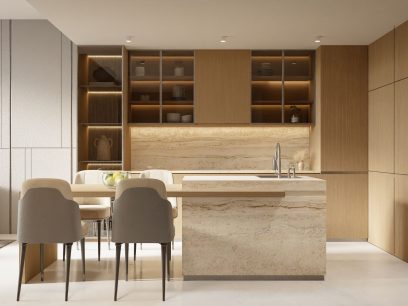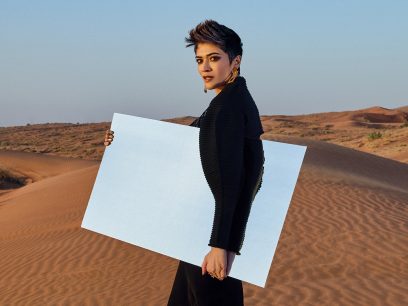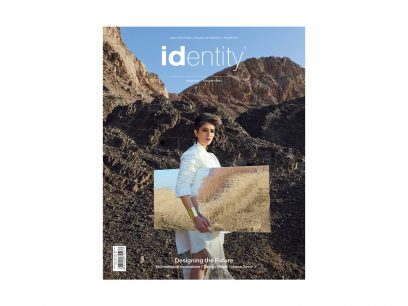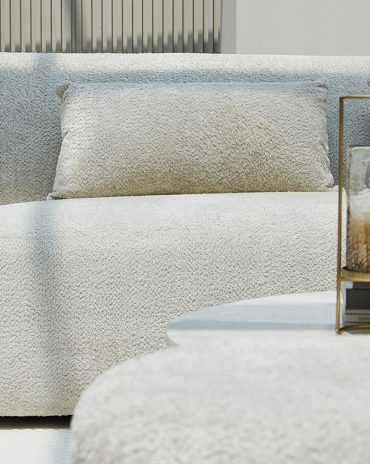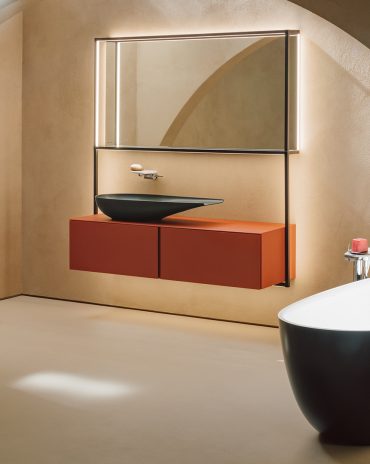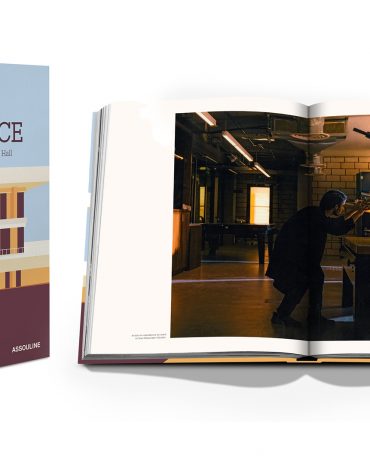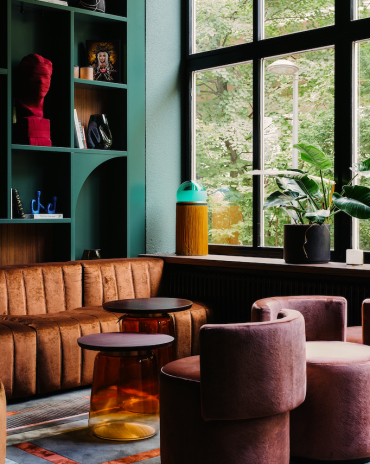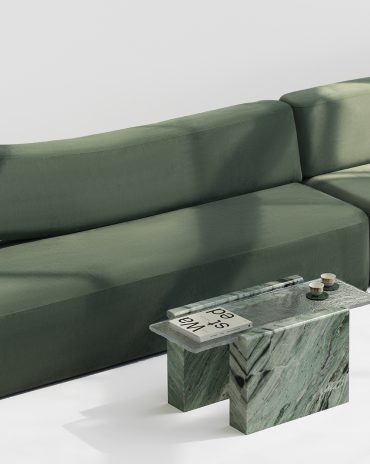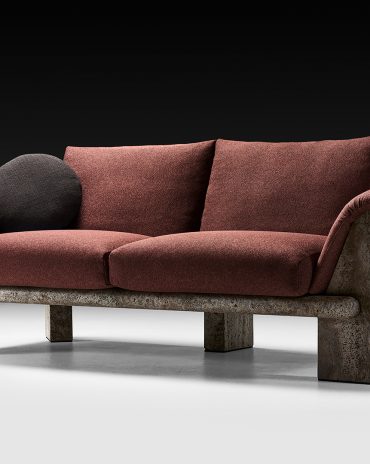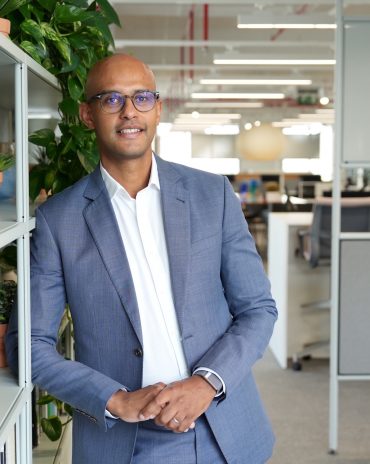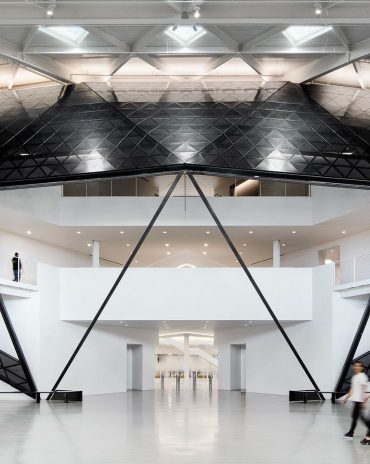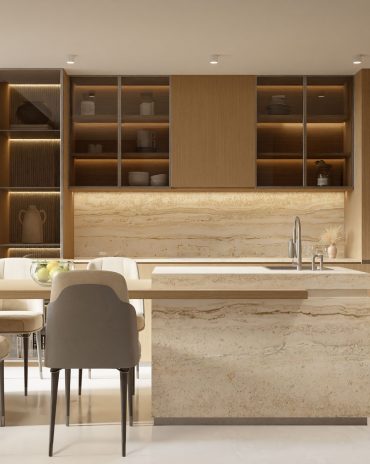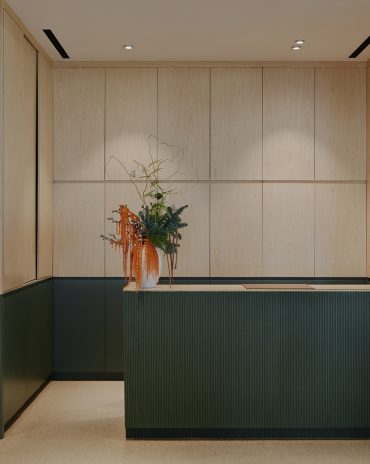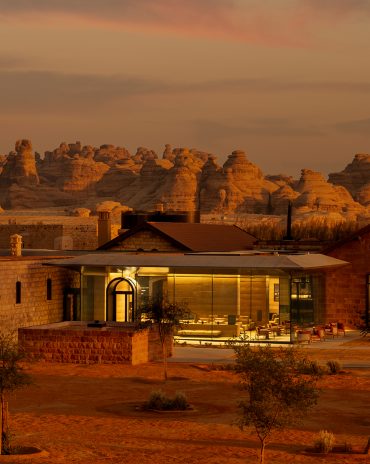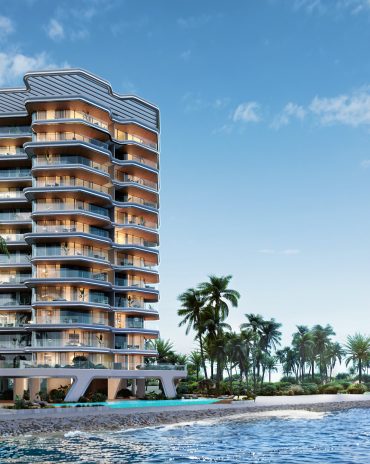Copyright © 2025 Motivate Media Group. All rights reserved.
Connecting Riyadh
The King Abdullah Financial District (KAFD) Metro Station designed by Zaha Hadid Architects (ZHA) connects the city and delights the senses with its signature sculptural shapes
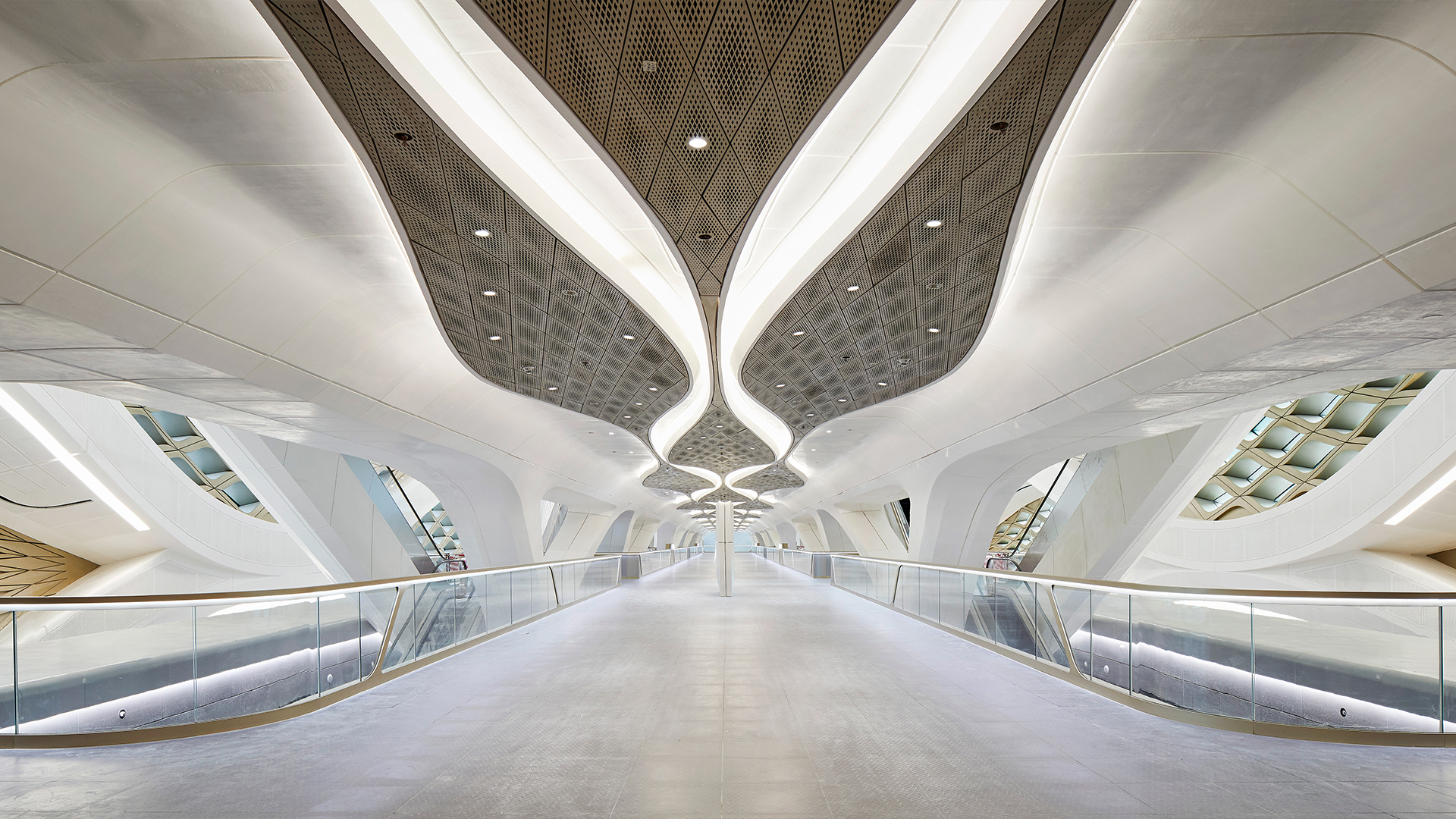
On 1 December 2024, Riyadh Metro officially opened its Blue, Yellow and Purple Lines (Lines 1, 4 and 6), marking a transformative moment for Saudi Arabia’s capital. As the world’s longest driverless transit system, spanning over 176 kilometres across six lines and 85 stations, Riyadh Metro introduces unparalleled levels of efficiency and innovation in urban transportation. Designed to accommodate 3.6 million daily passengers, this state-of-the-art system is set to significantly reduce car journeys, alleviate traffic congestion and enhance sustainable mobility in Riyadh. At the heart of this ambitious network is the King Abdullah Financial District (KAFD) Metro Station, a design marvel by Zaha Hadid Architects (ZHA). Positioned as the key interchange hub, the station connects the financial district, King Khalid International Airport and the KAFD monorail via its skybridge. Spanning four levels with six rail platforms, the station integrates seamlessly with bus services and park-and-ride facilities, creating a vital multi-modal transport nexus for the city.

Externally, this lattice is expressed through ultrahigh- performance concrete panels, which form a visually striking and functional façade
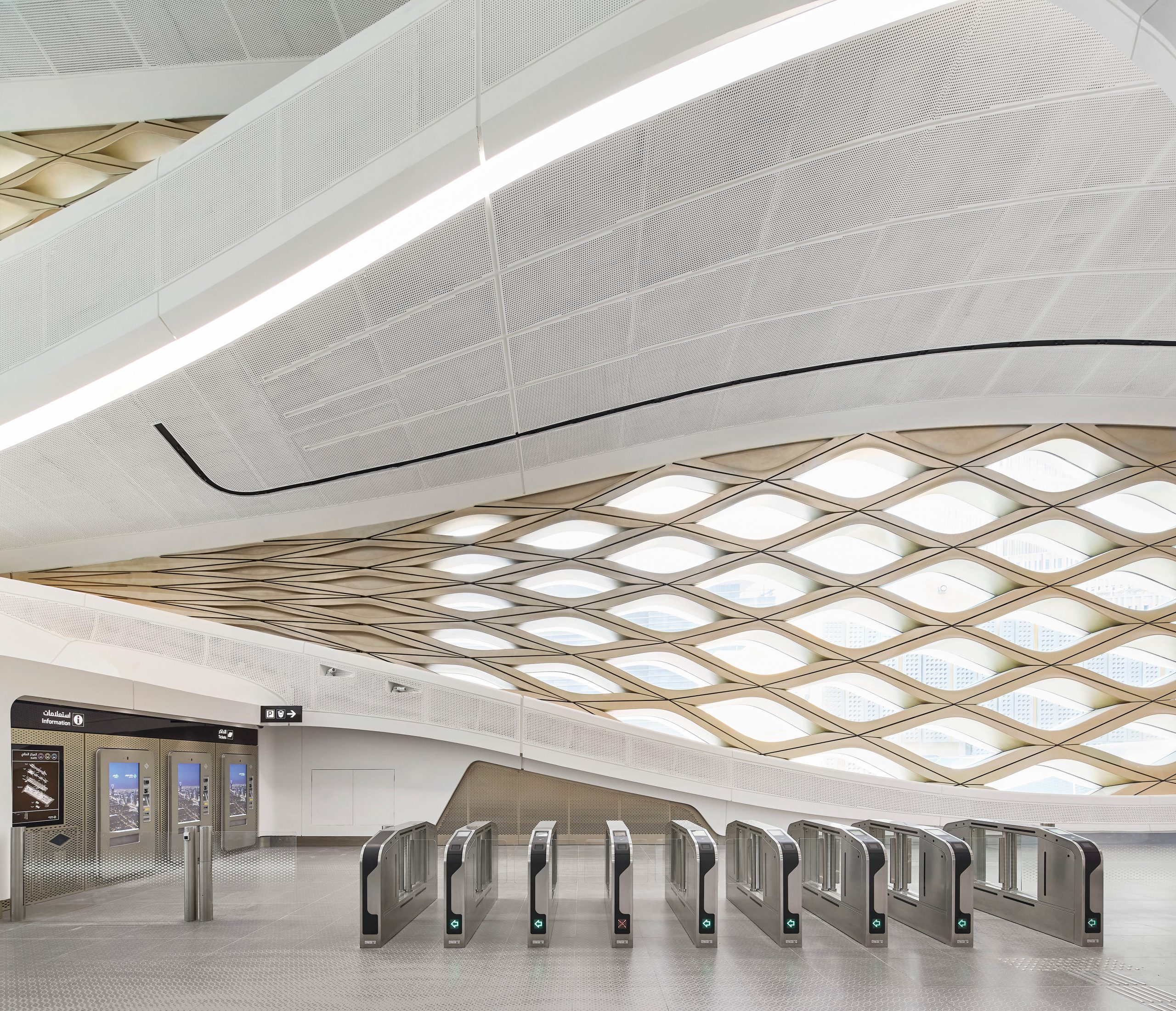
The station’s internal circulation patterns were meticulously modelled to
manage the predicted influxes of rail, car and pedestrian traffic
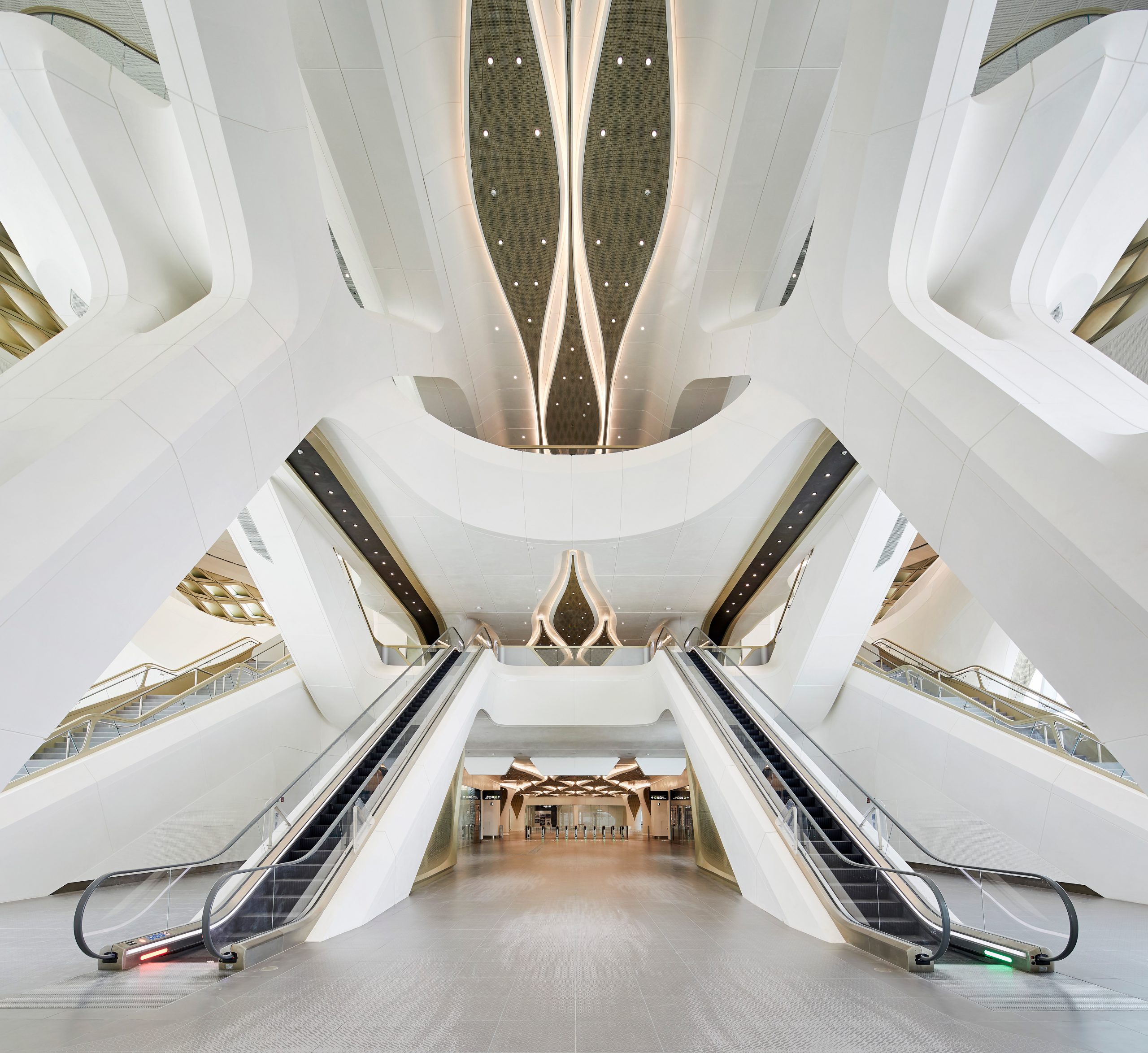
Beyond its functionality, the station’s design creates a series of indoor
and outdoor public plazas, enriching the social and cultural fabric of the King Abdullah Financial District
ZHA’s design for the KAFD Metro Station centres on connectivity, both functional and architectural. The station’s internal circulation patterns were meticulously modelled to manage the predicted influxes of rail, car and pedestrian traffic. This mapping process gave rise to a dynamic three-dimensional lattice structure, defined by opposing sinewaves that mirror the ebb and flow of daily transit activity.
Externally, this lattice is expressed through ultra-high-performance concrete panels, which form a visually striking and functional façade. The geometric perforations of the façade not only reinterpret the environmental shielding found within the region’s vernacular architecture but also reduce solar gain, enhancing the station’s energy efficiency. These patterns evoke the natural formations created by desert winds, with their fluid, repetitive rhythms echoing the interplay of nature and innovation.
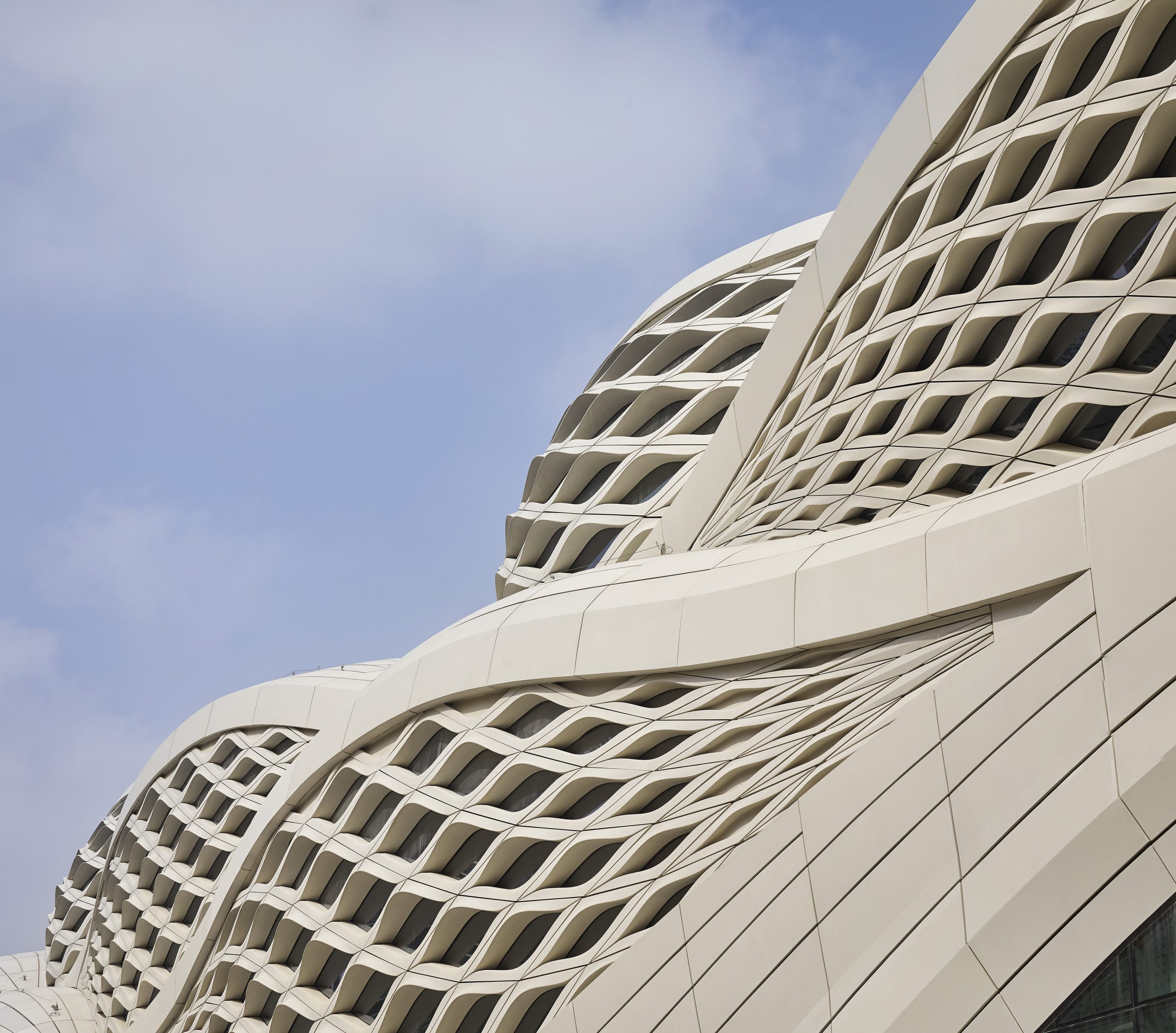
The KAFD Metro Station exemplifies ZHA’s commitment to marrying aesthetic brilliance with engineering precision. The station’s external envelope is a self-supporting structure, meticulously aligned with internal framework that supports platforms and viaducts. The design underwent rigorous optimisation to improve structural efficiency, environmental performance and ease of construction without sacrificing spatial quality. A high-efficiency cooling system, powered by renewable energy, works in tandem with passive design features such as the station’s façade. This system automatically adjusts to fluctuating passenger levels throughout the day, while sliding door panels on platforms help retain cool air. These innovations ensure optimal comfort with minimal energy consumption.
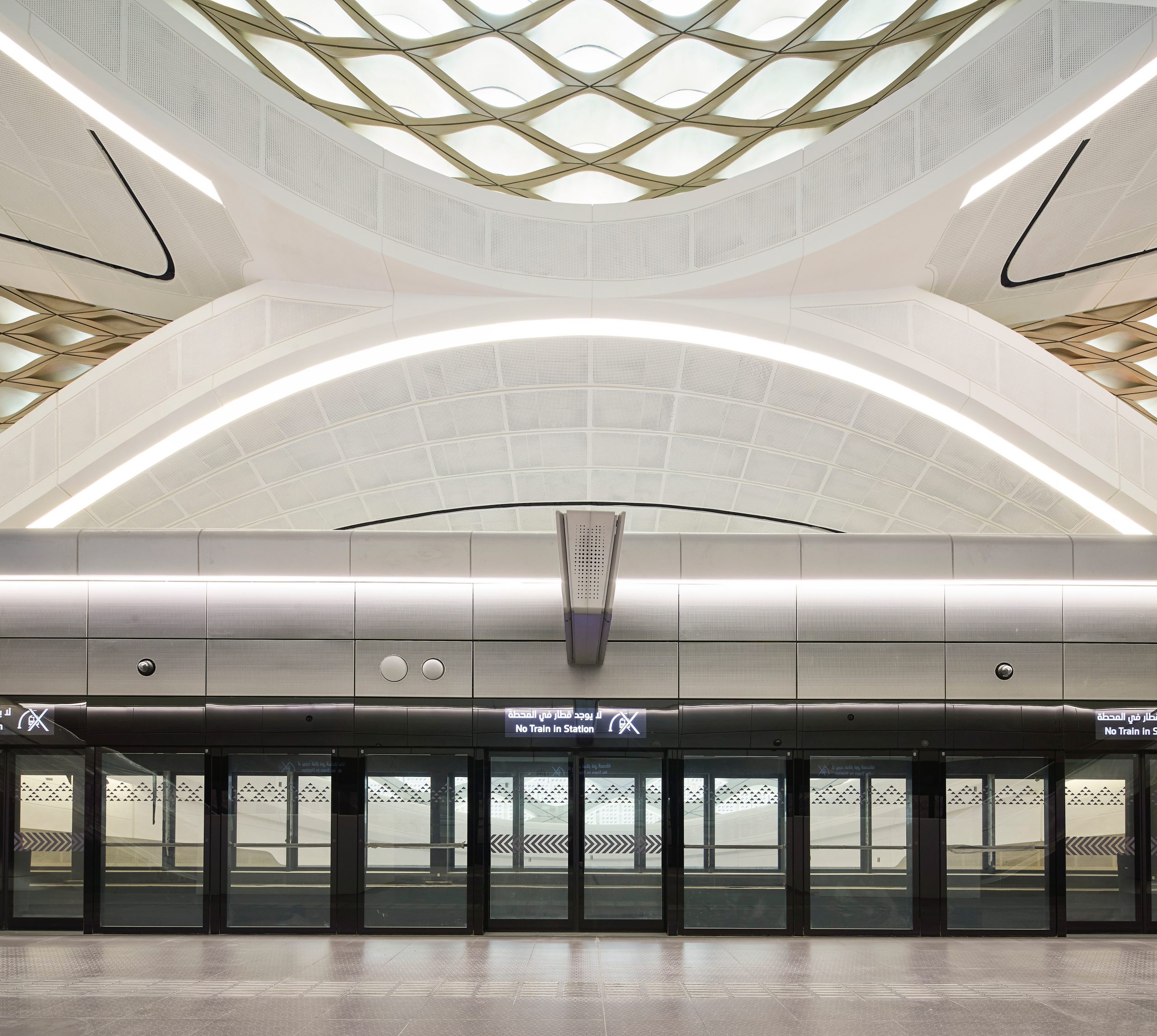
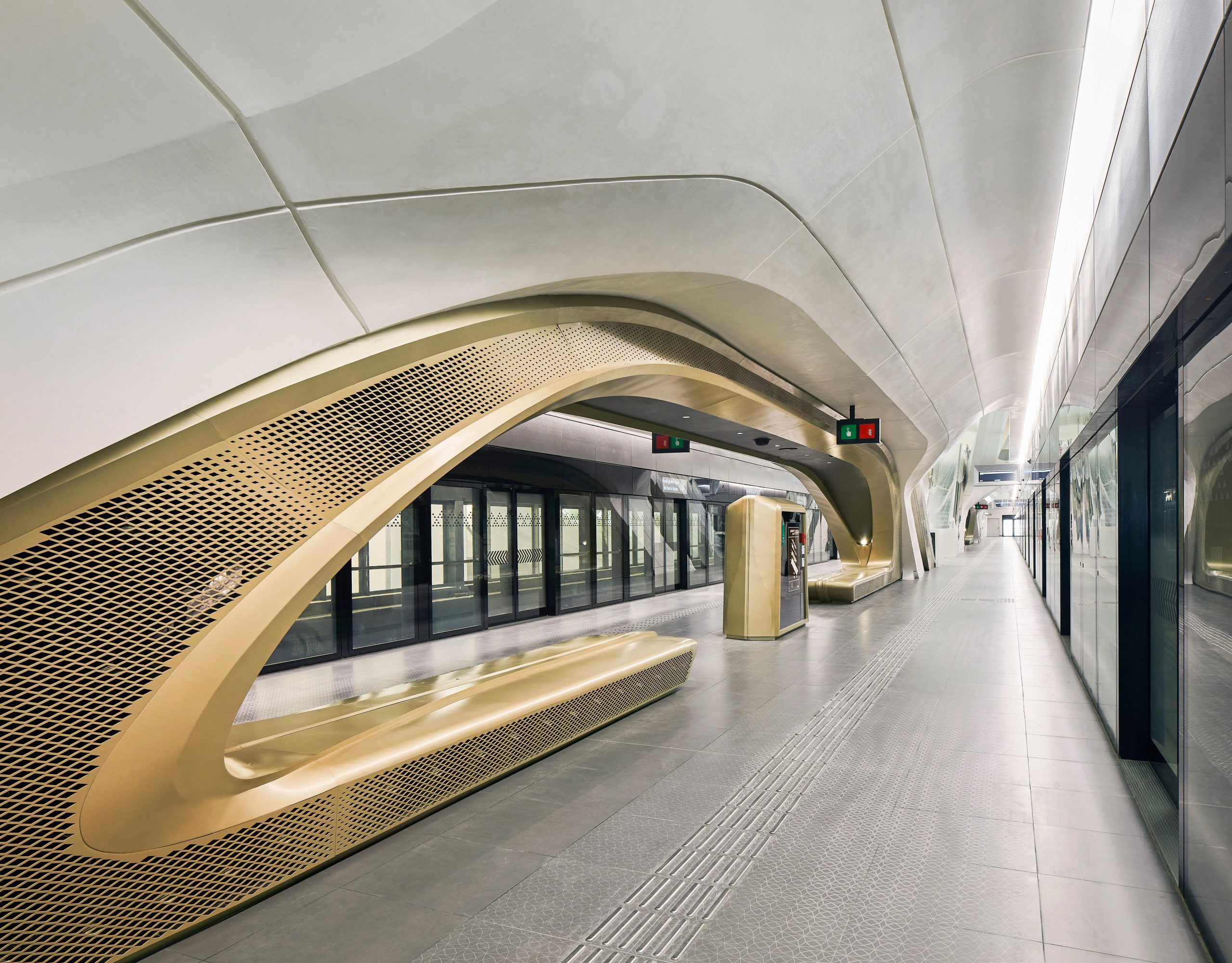
The KAFD Metro Station embodies sustainable design and has achieved LEED Gold certification. From its renewable energy integration to its environmentally responsive architecture, the station sets a benchmark for future urban infrastructure in the region. Beyond its functionality, the station’s design creates a series of indoor and outdoor public plazas, enriching the social and cultural fabric of the King Abdullah Financial District. Riyadh Metro and the KAFD Metro Station collectively signal a new chapter for Riyadh – a city embracing cutting-edge transit solutions while honouring its heritage and environment. This remarkable integration of innovation, sustainability and architectural excellence positions Riyadh as a global model for urban transformation.
Images courtesy Hufton+Crew.
Read more features here.
The Latest
Textures That Transform
Aura Living’s AW24 collection showcases the elegance of contrast and harmony
Form Meets Function
Laufen prioritises design, functionality and sustainability in its latest collections
Preserving Culture, Inspiring Creativity
Discover the Legacy of a Saudi Art Space: Prince Faisal bin Fahd Arts Hall explores the Hall’s enduring influence on the cultural fabric of Saudi Arabia
Channelling the Dada Spirit
Free-spirited and creative, The Home Hotel in Zurich injects a sense of whimsy into a former paper factory
id Most Wanted- January 2025
Falaj Collection by Aljoud Lootah Design
Things to Covet in January
identity selects warm-toned furniture pieces and objets that align with Pantone’s colour of the year
Shaping the Future of Workspaces by MillerKnoll
Stacy Stewart, Regional Director Middle East & Africa of MillerKnoll discusses the future and evolution of design in workspaces with identity.
Shaping Urban Transformation
Gensler’s Design Forecast Report 2025 identifies the top global design trends that will impact the real estate and built environment this year
Unveiling Attainable Luxury
Kamdar Developments has launched 105 Residences, a new high-end development in Jumeirah Village Circle.
The Muse
Located in the heart of Jumeirah Garden City, formerly known as ‘New Satwa’, The Muse adds to the urban fabric of the area
Cultural Immersion Meets Refined Luxury
The Chedi Hegra opens its doors in AlUla’s UNESCO World Heritage Site
Redefining Coastal Luxury
Sunshine Bay on Al Marjan island combines seaside views, exceptional design, and world-class amenities to create a unique waterfront haven

